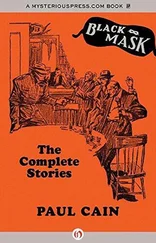Levinson eases his frame onto the floor, letting the cane drop in front of him.
This is of no concern to Lieutenant Sadykov and the boys.
They look into desk drawers and rifle lazily through Levinson’s belongings. Sadykov opens the mirrored glass door of an armoire, bracing for a strong scent of stale wool and naphthalene.
They aren’t looking for anything in particular, for surely they’ve realized from the outset that if this man has any material of a conspiratorial nature, it would be outside their intellectual grasp. It would likely be in a foreign language, or in some sort of code.
Squatting, Levinson sways lightly, his hands clutching his chest beneath the loose cloth of the robe. This is a position that suggests a combination of prayer; chest or gastrointestinal pain; and, perhaps, a stiff, arthritic spine.
With eyes wide open and focused on Sadykov and the boys, Levinson starts humming a tune, swaying with its simple rhythm. A student of Yiddish culture would recognize it as a nign , a singsong that starts softly, slowly:
Ay-ba-da-bamm-ba, addadabam,
Ay-biri-bombom biribibom
Biri-bi-bomba, biri-bi-bam …
Since an ordinary nign is intended to express feelings, not to impart verbal messages, this nign cannot be described as ordinary, for Levinson molds its sound, dropping in fragments of familiar words, gradually shaping partial phrases. Tatatatambadi, yambadi yam …
Several of the sounds that creep into that rubbish pile make the boys chuckle, and when the Russian phrase “Gruzinsky khuy sosyot tatarin-kurva” (a Tatar traitor sucks a Georgian cock) emerges as a leitmotif, Sadykov realizes that Levinson’s behavior can be ignored no longer.
“Stop the noise, Citizen Levinson,” orders Sadykov.
Levinson drops his response into the flow of his nign: “Ne mogu.” I can’t.
They stare at each other.
Sadykov is, by function, a predator, but an exploration of his eyes reveals that he doesn’t live to hunt.
Untouched by the passion of pursuit, he is going through the motions of playing a role, an actor badly cast. Why would any arresting officer allow his arrestees to rave? Why would a hunter establish contact with his prey? These are fundamental errors that could have been prevented through better training.
Levinson’s stare reveals something completely different. This dying scene is his alone: the set, the cast, the costumes, even the orchestra is his.
The boys look away. They have nothing at stake. Deployed, they are lethal. Undeployed, they drift into passivity. They await orders. They feel no urgency to slit throats. They are the opposite of citizens. They are your basic cogs, and can anyone imagine anything more soulless than a cog? Would anyone be surprised that Levinson’s biggest fear involved leading men of their ilk on a nighttime raid?
* * *
Levinson has no particular dislike for Tatars, Georgians, or, for that matter, men who pleasure each other orally.
On the night of February 24, 1953, his goal is to use the so-called problem of nationalities and what will later be known as homophobia to his tactical advantage. The formula is remarkably simple: the nineteen-year-olds are Slavs (Ukrainians), their lieutenant a Tatar, and their ultimate commanders — Beria and Stalin — Georgians.
To defend the honor of his uniform, to defend his manhood, Sadykov now has to beat this old madman into submission.
Sadykov takes a step toward Levinson.
Levinson is not an inviting target. There can be no assurance that he will not stiffen or even fight back. His exaggerated courtesy and deranged singing notwithstanding, something in his eyes says plainly, “Don’t come near.”
The instant he bends over the actor, Sadykov surely understands that he has made a mistake, for Levinson’s arms are no longer clutching his chest.
As they swing open, suddenly, forcefully, spring-like, Sadykov feels a cold intrusion beneath his chin. It’s far short of pain. Sadykov wants to emit a scream, but cannot. His legs no longer support his body. They buckle, and black arterial blood gushes onto the front of his tunic.
Levinson continues the trajectory of his twirl toward a Ukrainian boy whose hand grasps the handle of a sidearm. He is spring-loaded, graceful.
This movement is not rooted in Levinson’s bloody adventures in the taiga along the Trans-Siberian. There, he was unburdened by technique. This is all stage.
In 1937, the pirouette with smallswords, which Levinson first performed in a shepherd’s getup as the curtain fell at the end of the second act of Bar-Kokhba , made Levinson famous among Yiddish-speaking audiences in Moscow and in the provinces. Indeed, in the touring company, Levinson was promoted to the part of Bar-Kokhba.
And now, in 1953, Levinson is airborne once again, a one-man Judean Air Force: a single pirouette, two Finnish daggers, two throats severed, a nign stopped. An acrobat would have bowed, but an acrobat Levinson is not.
The third boy is spared in the leap.
He is becoming cognizant of the fact that his tunic is smeared with the blood of his comrades. This is only his third operation. He started the night with a sense of power. Now, in a flash of smallswords, the sense of power has vanished, replaced by what can best be described as a porridge of questions: Why? How? Who is this man?
The boy raises his hands, an absurd gesture that bespeaks his inability to think strategically.
What is the meaning of surrender to a resister of arrest? How would you expect Solomon Shimonovich Levinson to take you prisoner in the center of Moscow? How would he feed you? How would he house you, especially if you happen to be a soldier of the MGB? Most important, do the Geneva Conventions apply to individuals who find themselves in situations of this sort?
These largely theoretical problems resolve themselves as this would-be prisoner takes a panicked step toward the door. Levinson is all adrenaline now. Movement of the adversary is all it takes to make him pounce. A moment later, the boy lies on the floor, the handles of two Finnish daggers protruding from his back.
* * *
It’s anything but an accident that der komandir aims at the throats of his would-be captors.
This choice of targets is consistent with his frustration with what is known as the Jewish Question. The Jewish Question is the subject of many conversations in the winter of 1953. In the streets, people say that Jews have always used Christian blood in their rituals, and that they continue to do so.
They say that Christian blood is used in matzos — dry, cracker-like bread they eat on their Easter. They say that if you look at it, you see the scabs. Also, they say blood is added to sweet pirozhki called hamantaschen. The victims are usually children, who are bled painfully, slowly. But if the Jews can’t find a child to bleed, they use an adult, and if they are afraid of being discovered, they slit their victim’s throat instead of waiting for the blood to drain out of the pinpricks.
They say that when Jews pray, they strap little black boxes with magic writings onto their heads and arms. They hide diamonds in those boxes, too.
They say that the Jews who had become doctors since the Revolution are now secretly killing Russians under the guise of medicine. They do this out of pure hatred, not as part of religious observance, so no bleeding is involved. The newspapers say that a group of them, who worked at Kremlyovka, brought on the death of Comrade Zhdanov and conspired to kill Comrade Stalin. They were caught and imprisoned. Murderers in white coats.
They say that a Jewish doctor was draining pus from the swellings of cancer sufferers and injecting it into healthy Russians. He was caught on a bus, and it couldn’t be determined how many people he had injected. They say he used a special thin needle of his own invention. You wouldn’t feel it, but if he stuck you, you were dead.
Читать дальше












